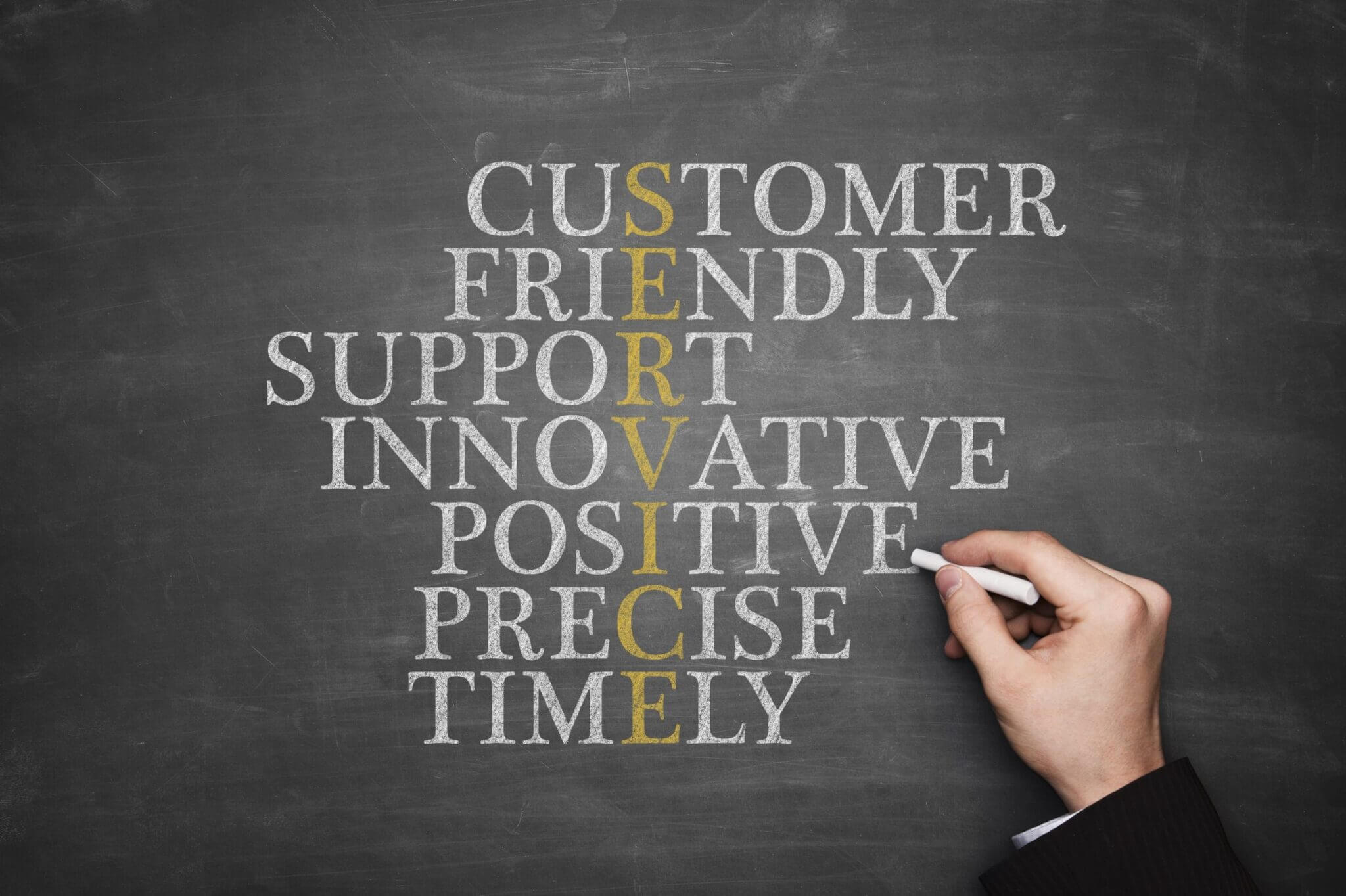Ever gone to customer service training and been asked “how long do you think your customers are willing to wait in line?” Most people answer with “it depends” response. As in – it depends on: how bad the customer wants the product or service, how long the line is, when their coupon expires, how long they have already waited, or whether or not the item is on sale. There may some truth in those statements for a few customers, however for most customers it depends more on communication and attention to time. Let us examine the communication angle first for 3 types of businesses (you can save time by skipping to your type of business).
Register or counter: Customers get frustrated when they have to wait in line longer than 3 people, which is why many store now have “I see 3” announcement to get more people to the register. So how do you keep customers happy during the holidays? A time-efficient method is to have the customers all go through a single line and always have the clerk call the next in line. Studies of this method show the customer wait time can be cut significantly and many see this as a more “fair” treatment than trying to get into the shortest line. However, to prevent line-jumping and keep it fair, you must set up visible markers for the line so customers know path to follow. Take the 1-line idea a step further with the amusement park idea of letting customers know how long that have to wait when they enter the start point of the line and remind them of approximate wait time when they get to a mid-point. Once past mid-point those waiting feel they have an end of the wait in sight. Studies show customers like being informed and willingly wait the expected/posted time. The above option is they most fair way for big business to handle lines, if you have a small business, you may want to consider alternatives that shows concern for the customer and gives them to option to roam around (and possibly keep spending). You can provide a “place in line” number that you call over the loudspeaker when it is their turn to pay. Or give customers those buzzers like they hand out in many restaurants when it is their turn at the counter. As long as all the customers know this is the process, there should be no issues of fairness or perception of line jumping.
Phone customer service: Personally, I hate those recording that tell me “our call center is busy; the next available representative will be with you soon.” Soon to the provider may be within 10 minutes, soon to the customer is most likely 2 minutes or for the truly patient 5 minutes before they hang-up. This only tells the customer why you are not picking up their call not when you might answer. What I (and most other customers) prefer is to be kept informed of when I will be responded to. Some of the call centers I interact with often have a recording that tell me “Thank you for calling. We are experiencing a high volume of callers at this time. Your call is important to us and a representative should be with you in approximately X minutes.” The X minutes can be anywhere between 5-20 minutes. However within a few seconds, they have given me a choice of waiting or calling back later when they may be less busy. If I choose to wait, I know that I can get a cup of coffee or type an email while I wait the stated timeframe. These same companies provide me with a waiting time update every 2 minutes so I know where I am in the line now. Sometimes I may take the 2-minute increments forward and other times I quickly leap forward several minutes depending on other’s needs being quickly met or their hanging-up. I like this as I know what to expect if I choose to wait. Usually when I get to the 2-minute point, I am taken is a matter of seconds. Now they have exceeded my expectations by getting to me quicker! The above is a technique I like. What is an additional technique that I love? When they offer to let me seem to “skip the line” by choosing to have them call me back when my turn in line comes! This means giving me back my time to do whatever I want while others wait – I just love it!
On-line store: Youou might be thinking people aren’t really waiting in line when they use the interest or a mobile app to order. However, they can get error messages because the system went down due to too much traffic or when they try to buy something that sold out before they completed the order in their shopping cart. To prevent losing customers here, communication is very important! If the site goes down, be ready with a message that tells the customer that it is down, why it went down, and have a plan to update the expected “back up around X” time. Be sure to include the time zone when putting in the hour and minutes.




























